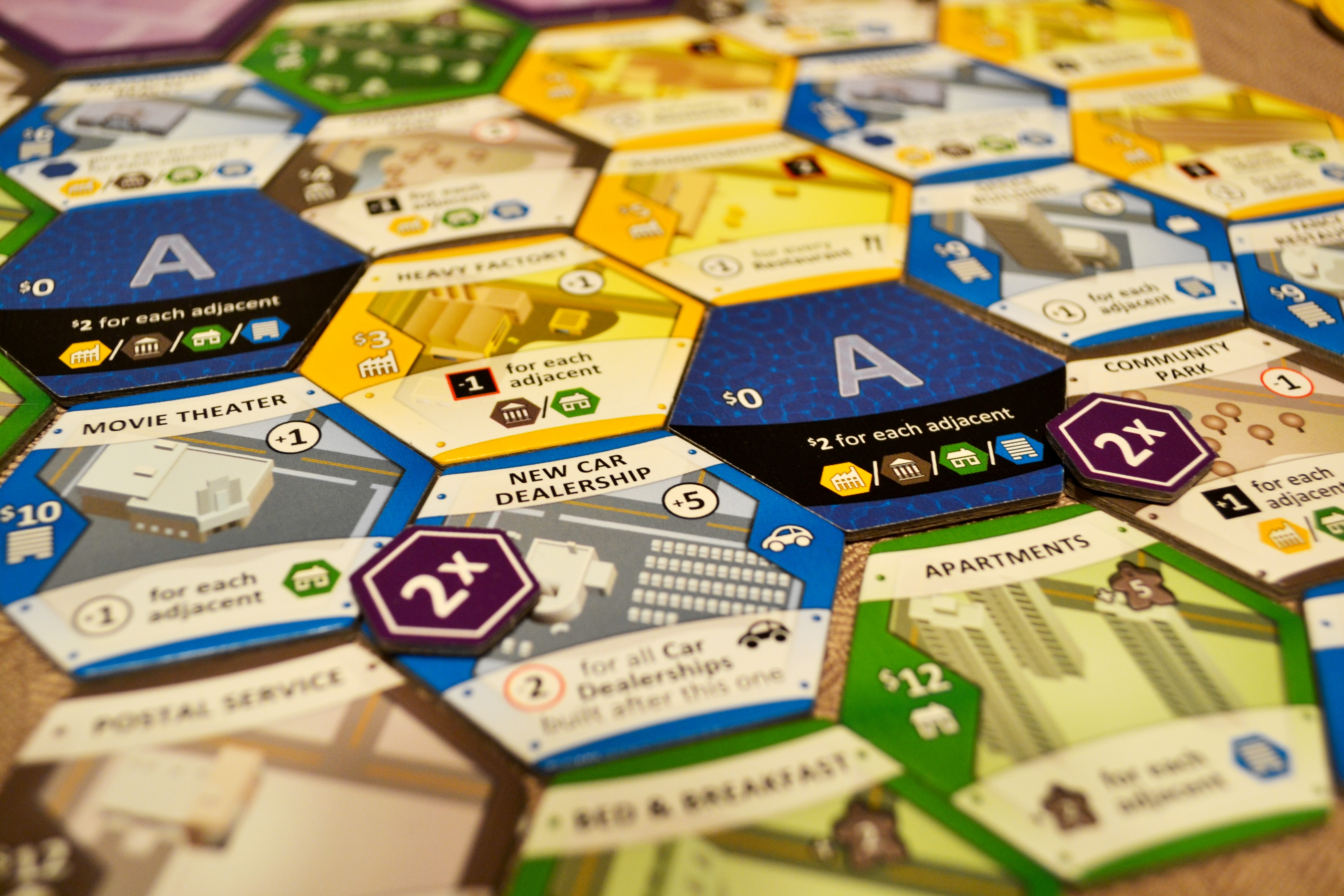Designed by Devin Low.
New York is under attack by the nefarious Magneto! You will need to fight back! But first, build a deck!
Legendary is a deckbuilding game in the spirit of Dominion. You start with a fist full of shield agents, which you can use to buy better heroes and fight bad guys. The better heroes you can recruit are all your classic heroes – Wolverine, Iron Man, or Captain America, but at this point they have so many expansions that you can play with almost any Marvel hero you can think of. During the course of the game, you’ll want to recruit character that have good synergy with each other, and weed out the bad cards.
Meanwhile, the city is under attack. A new villain is drawn every turn, and every now and then they snag an innocent bystander to drag along with them.
Interesting Mechanic: Villains, Schemes and Master Strikes. Each game has a designated Supervillain. He’ll need to be defeated four times for you to win. Each supervillain has its own scheme, which is to say the mechanics that detail how they engage with the players. Most notably, there’s two cards that trigger the supervillain’s activities: ‘master strike’ abilities that trigger their attacks, and ‘scheme twist’ cards that move you further to the end of the game. The wacky thing is that the mechanics for each villain are all starkly different, which means that master strikes and scheme twists need to be handled very differently in each game. Not only are these mechanics usually thematically strong, they also add a lot of replayability to the game.
Legendary will often earn an upturned nose from hardcore gamers, but Marvel fans should love it. It’s also a ridiculously well-supported game. They’ve released a ton of expansions to this game now that have delved deep into the comic book hero vaults for new heroes, and do a good job of identifying potential new mechanics to add.

(Photo Credit: BoardGameGeek)









Recent Comments